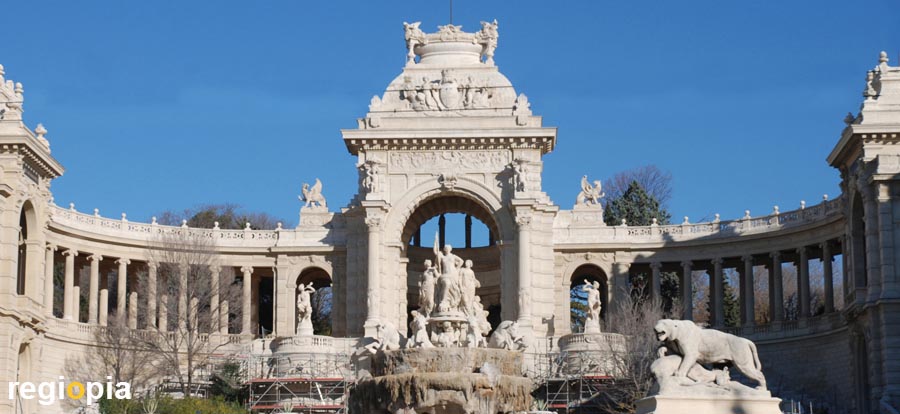
Plais Longchamps
The wide boulevard Longchamp leads from the center of Marseille to the hill above the city. The Palais Longchamp was built as a monumental end of this boulevard. The palace was built to celebrate the Canal de Marseille, which brought water from the Durance River to Marseille and arrived on the Plateau de Longchamp in 1847. Two semicircular columned galleries with a triumphal arch in the middle connect the two museums which together form a square with a fountain and groups of figures. The Palais Longchamp houses the Musée des Beaux-Arts and the Musée d'hisoire naturelle. The historicist structure was built in 1869 by the architect Henri-Jacques Espérandieu. From the Palais Longchamp you have a very nice view on the center of Marseille. The Parc Longchamp begins just behind the palace.
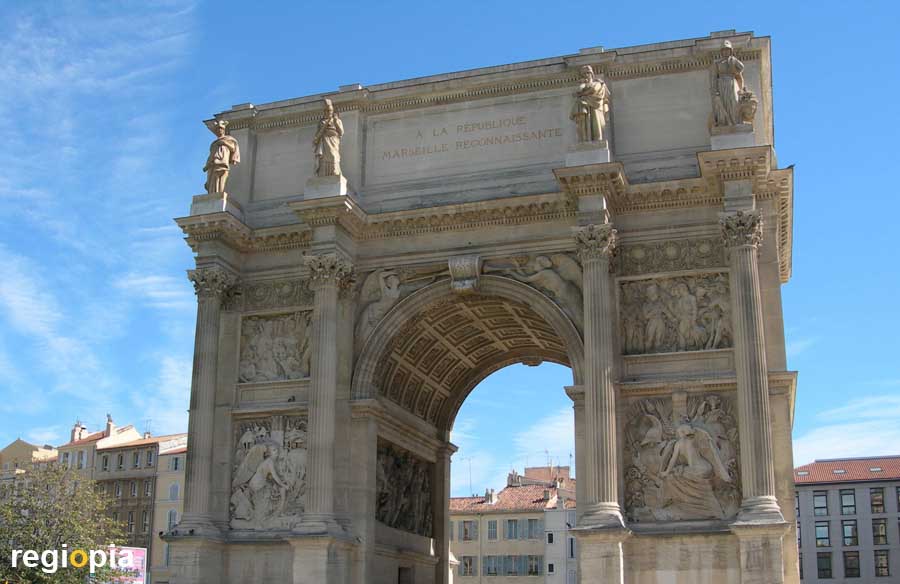
Porte d'Aix
The Porte d'Aix is a triumphal arch that was built in 1839. It was originally supposed to be built in 1784 in honor of Louis XIV and the independence of the United States, but the project has been postponed repeatedly. In 1823 the mayor of Marseille made a new attempt to build a triumphal arch at the Porte d'Aix. This time the arch was dedicated to the victory of the Duke of Angouleme, who ended the Spanish Revolution in 1823 by conquering Trocadero, an island close to Cadiz. In Paris a square and a metro station is named in honour the Trocadero victory. The Arc de Triomphe at the Porte d'Aix was modeled using the Arch of Constantine in Rome as archetype.
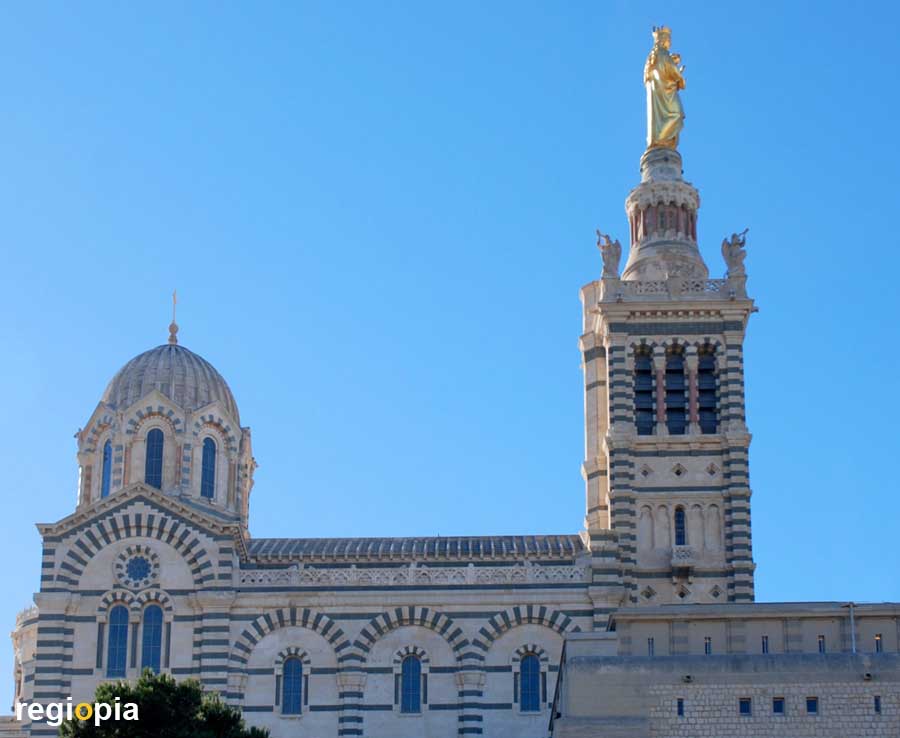
Notre Dame de la Garde
The basilica, built on the 161 m high fortress hill "La Garde", was inaugurated in 1864. It is a pilgrimage and thanksgiving church for sailors. Many ship models hang in the magnificent interior. Notre Dame de la Garde was designed by architect Henri-Jaques Espérandieu in the New Byzantine style. The pillars and arches are emphasized by alternating light and dark stones. On the outer facade gray-blue and white limestone was used. In the interior the church is much more lush, here the striped pattern is created by white and red marble. The yokes of the nave are crowned by gilded domes. A gilded statue of the Virgin Mary, which has become a symbol of Marseille, stands on the 65 m high bell tower. On the plateau of Notre Dame de la Garde there are still remains of the fortress, which was used for military purposes until the end of the First World War. From here you have the most beautiful view above Marseille
How to get to Notre Dame de la Garde
From the Vieux Port, bus number 60 goes to the cathedral on the hill.
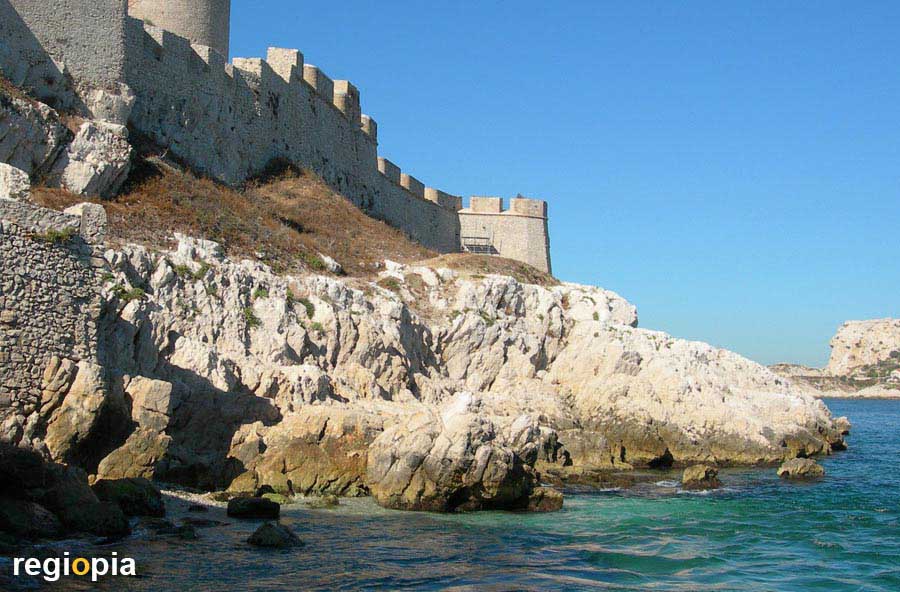
Chateau d'If
To protect the harbor of Marseille, a fortress was built on the Ile d'If in 1531. The rock also served as a prison island. The island became famous through Alexandre Dumas' novel "The Count of Monte-Christo". The Chateau d'If is one of the most famous landmarks of Marseille. From the Vieux Port excursion boats go to the island, where you can visit the fortress. The little island is only 1.5 kilometers away from the coast. From here you have the most beautiful panorama of Marseille.
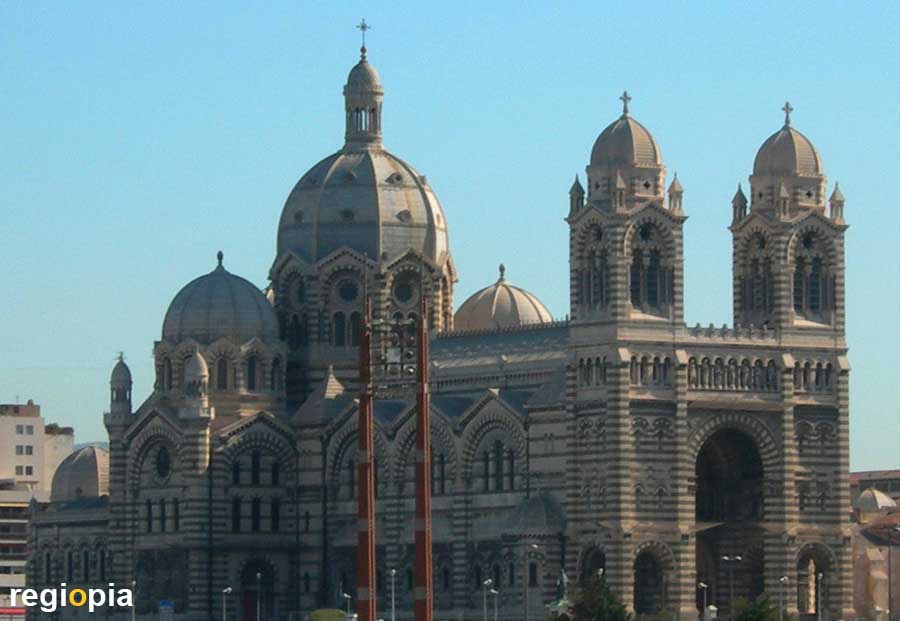
Cathedrale de la Major
The "Cathedrale de la Major" was built between 1852-1896. The round arches and domes give the church a Neo-Romanesque-Byzantine look. The design of the cathedral was made by Henri-Jacques Espérandieu and Leon Vaudoyer. Espérandieu previously designed the church of Notre-Dame de la Garde.
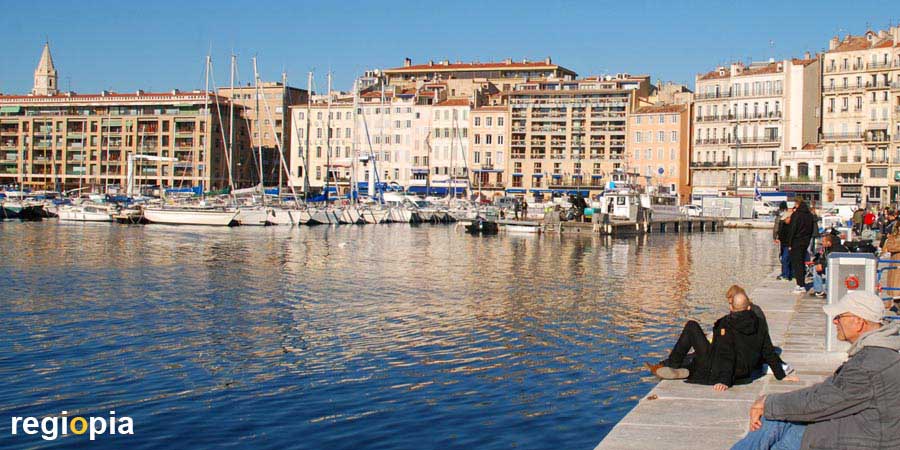
Vieux Port
The "Vieux Port" (old harbor) is the most beautiful place in Marseille. The pavement was renewed for the "European Capital of Culture" in 2013 and a reflecting pavilion was designed by Sir Norman Foster. From here the ships leave for the "Ile d'If".
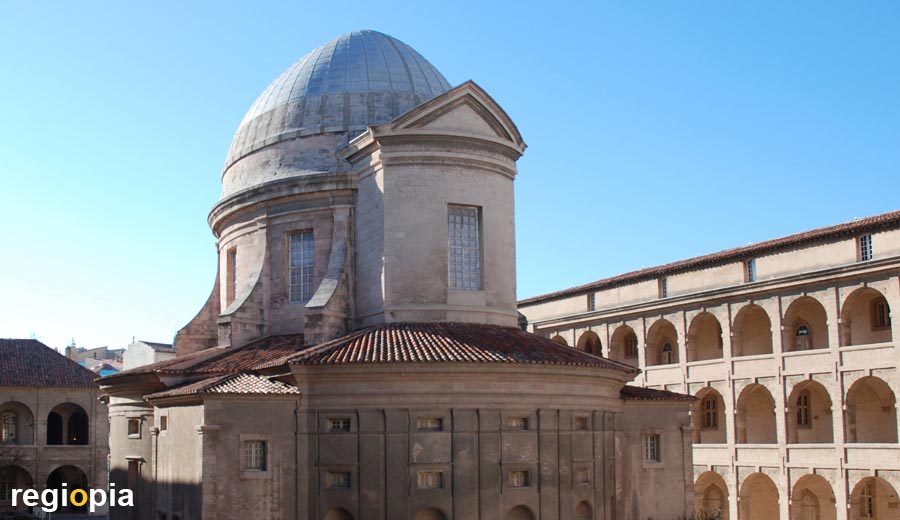
La Vieille Charite
La Vieille Charité (old hospital) was begun in 1671 as a poorhouse by architect Pierre Puget. The three-storey building consists of a U-shaped main building with arcades and a chapel in the courtyard. The Charité was completed in 1745.
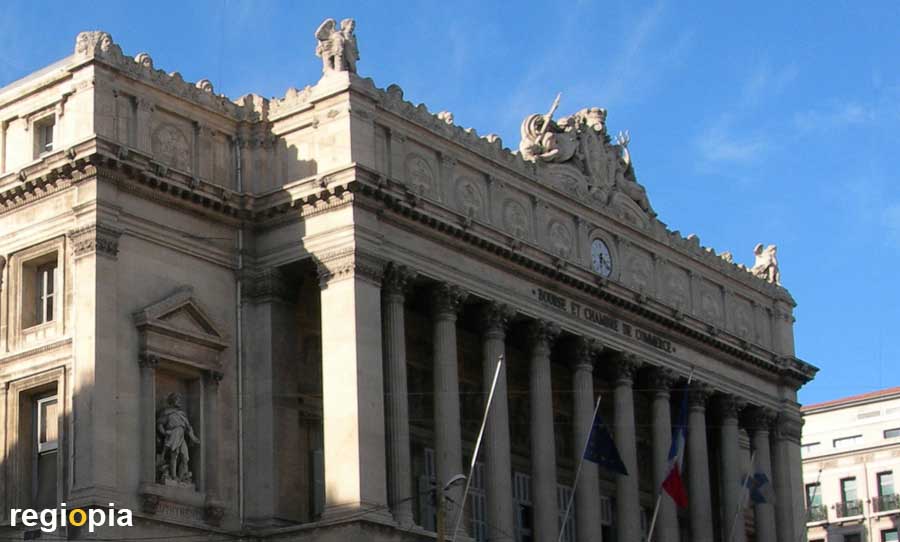
Palais de la Bourse
The Chamber of Commerce was founded in 1599 and is the oldest in France. In the middle of the nineteenth century, a new building was erected which seemed appropriate to the importance of Marseille. The "Palais de la Bourse" was opened in 1860.
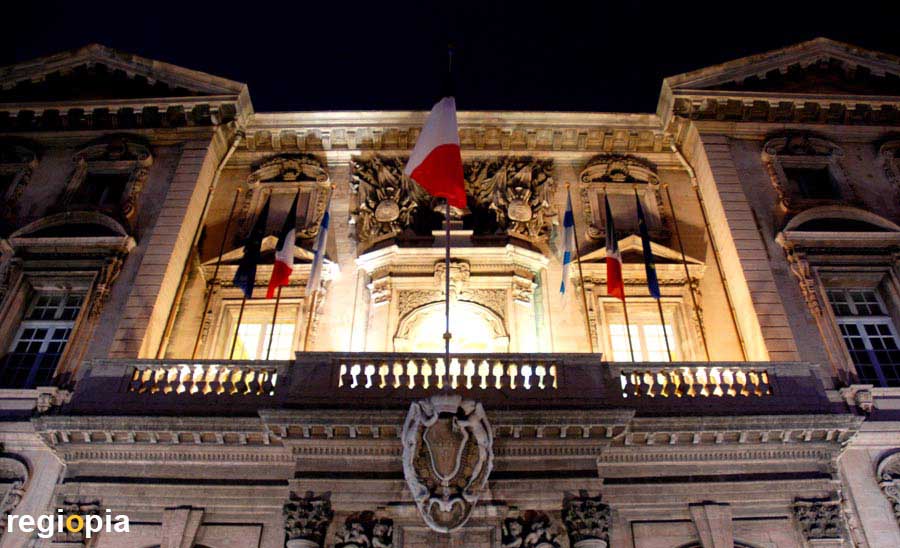
Hotel de Ville
The baroque city hall of Marseille is located directly on the northern harbor basin. It was built in 1673 by Gaspard Puget, the brother of Pierre Puget, architect of the "Vieille Charité".
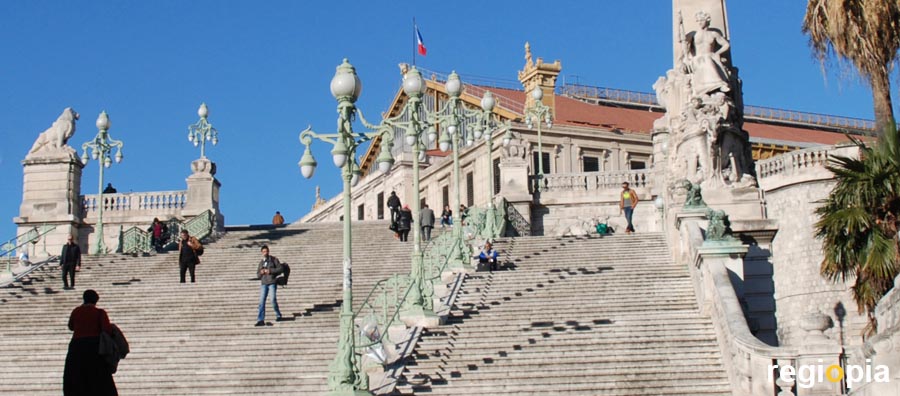
Gare Saint-Charles
The central train station of Marseille was built on a hill, the access from the city is via a generous stairway. The "Gare Saint-Charles" was built in 1848 with 16 tracks.
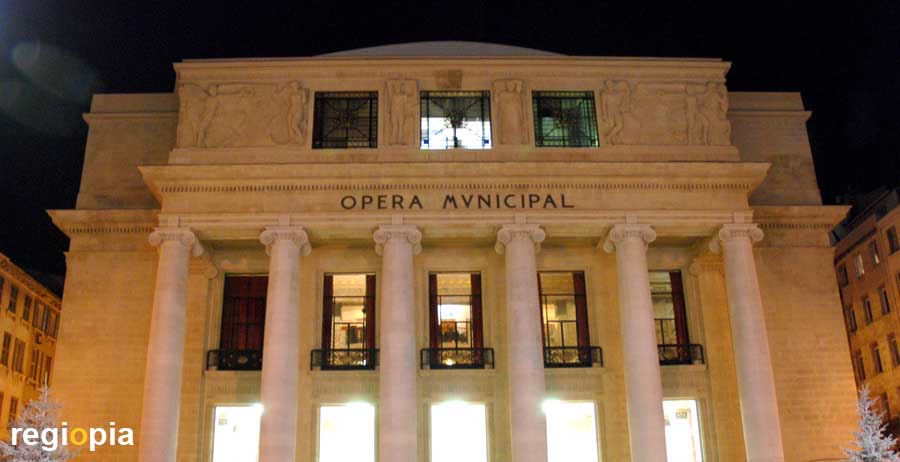
Opera Municipal
The "Opera Municipal" was built in 1787 and burned down completely in 1919. The opera was rebuilt in 1924, but retained its neoclassical appearance.
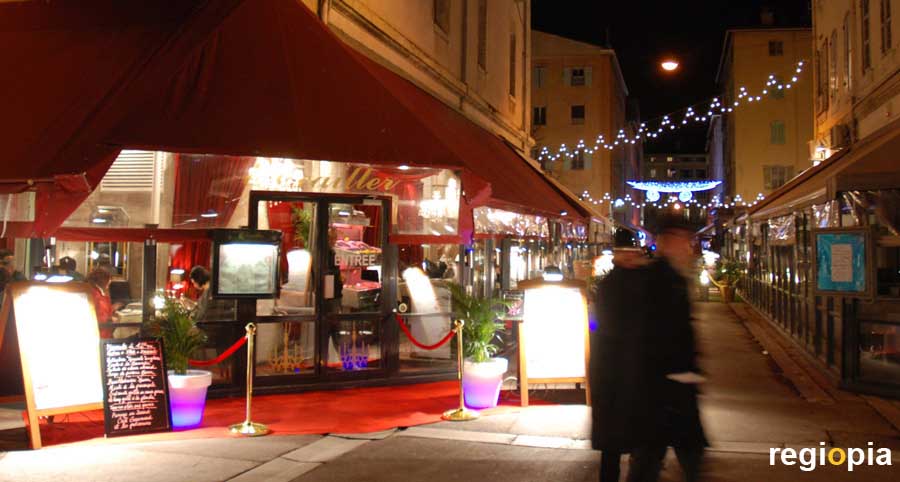
Carré Thiars
The "Carré Thiars" is the famous restaurant and bar area of Marseille. Around the small square you will find fancy restaurants. You can also try the Cours Honore d'Estienne d'Orves nearby. In summer time this is the heart of Marseille.
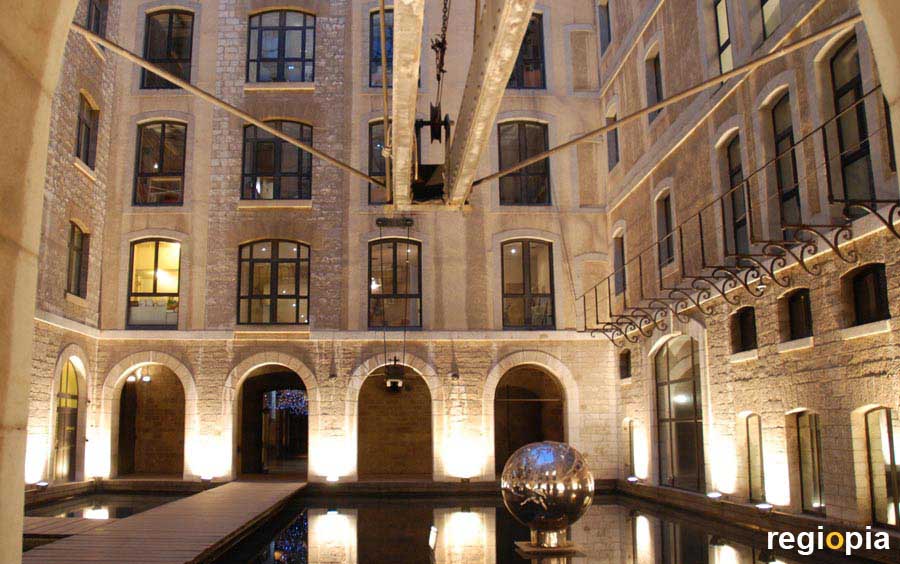
Les Docks
The 400 m long dock building was recently renovated and converted into office space. On the ground floor there are shops and restaurants. The four courtyards (photo) have all an individual design.
Map of sights in Marseille
ads
Marseille France
Discover Marseille
Marseille is the largest port city in France and is with 850,000 inhabitants the second largest city in the country. Due to the port, the city also has a very high proportion of foreign residents, which leads to conflicts in the city. Especially after the Algerian War of 1962, many people from North Africa fled to Marseille. The city grew by 100,000 residents within 5 years after the war. The Algerians have been part of Marseille since then. The most famous of them is the soccer player "Zinedine Zidanne", who became world champion with France in 1998.
Marseille is an old port city that was founded by the Greeks. The city is framed by mountains and the sea. The "Notre Dame de La Garde" church, built on a mountain by the port, towers over the entire city and is the symbol of Marseille. The center of the city is located at the "Vieille Port".
ads
ads


